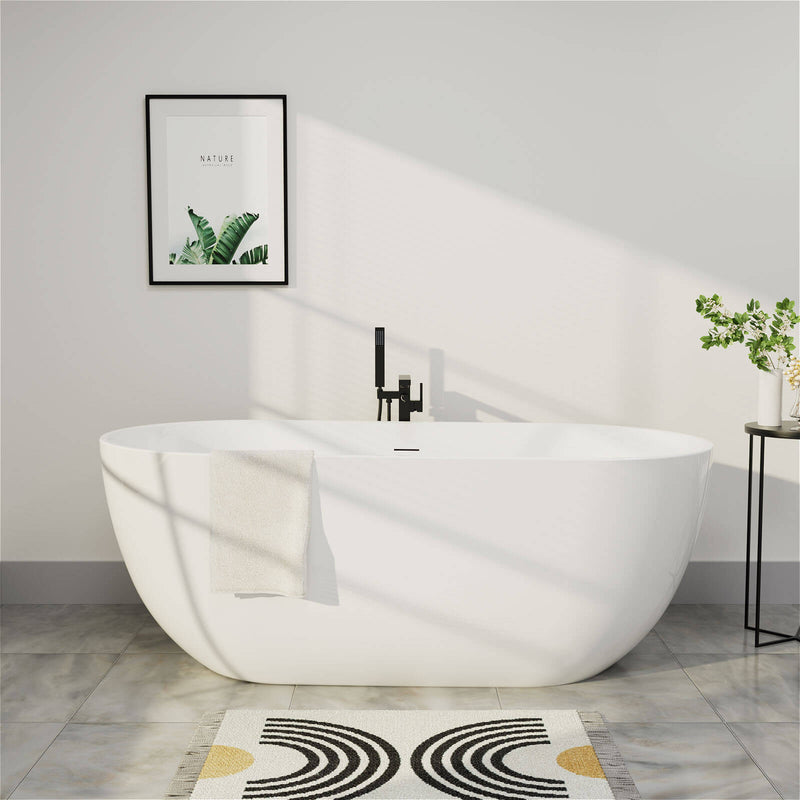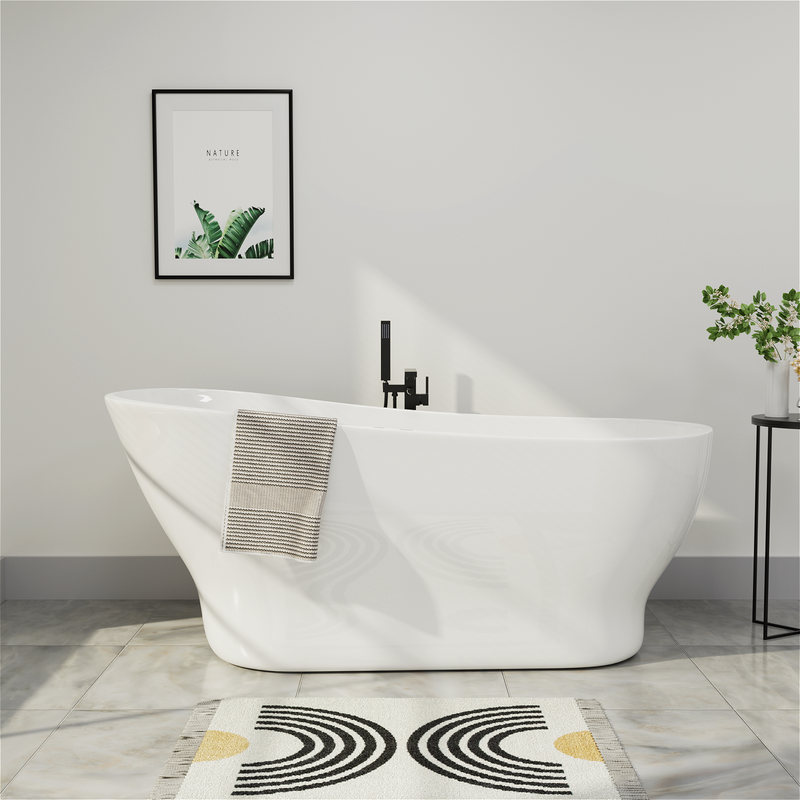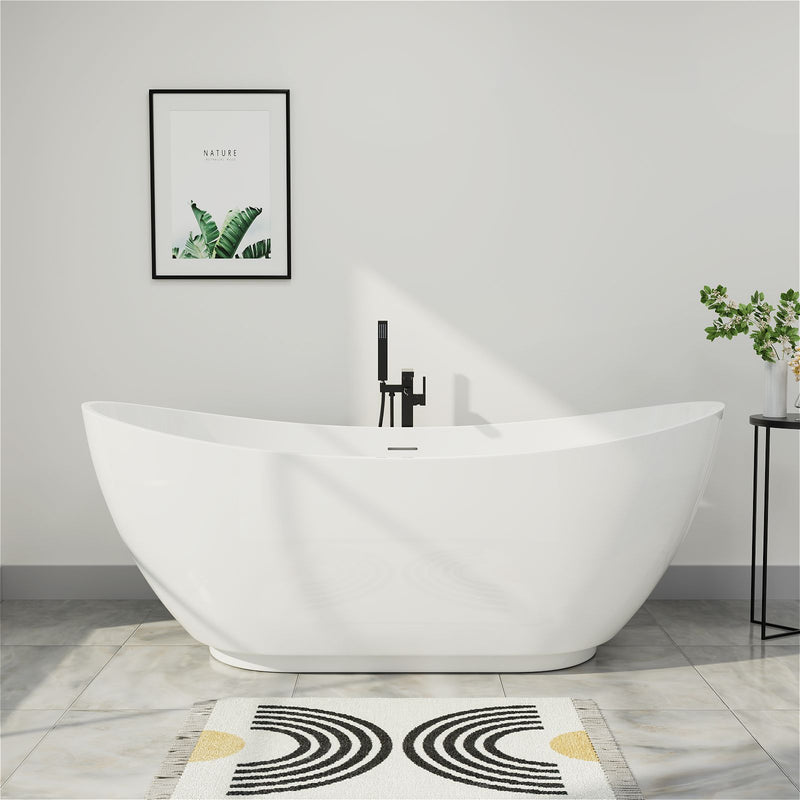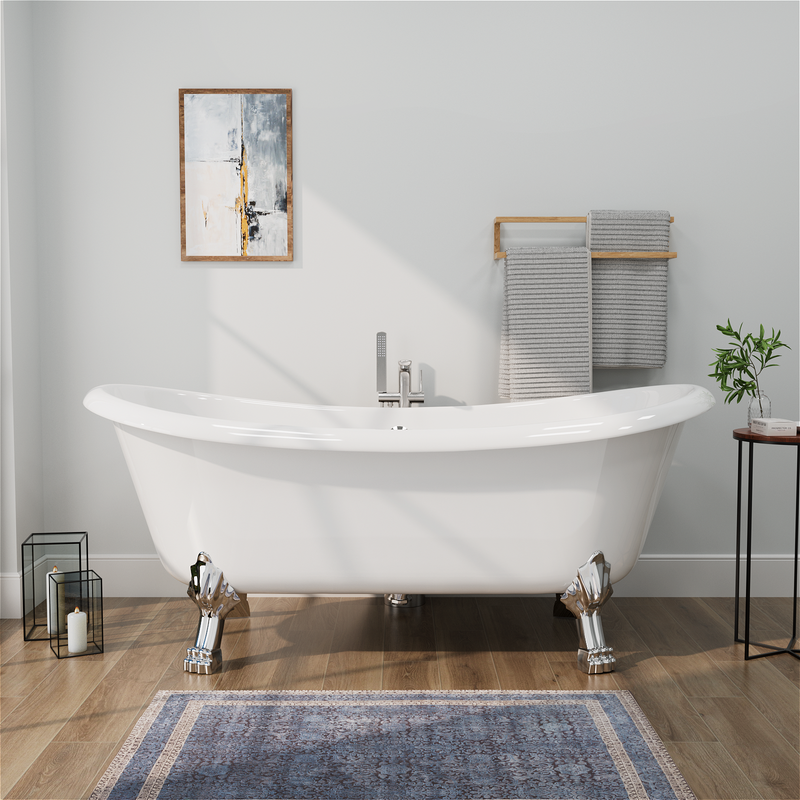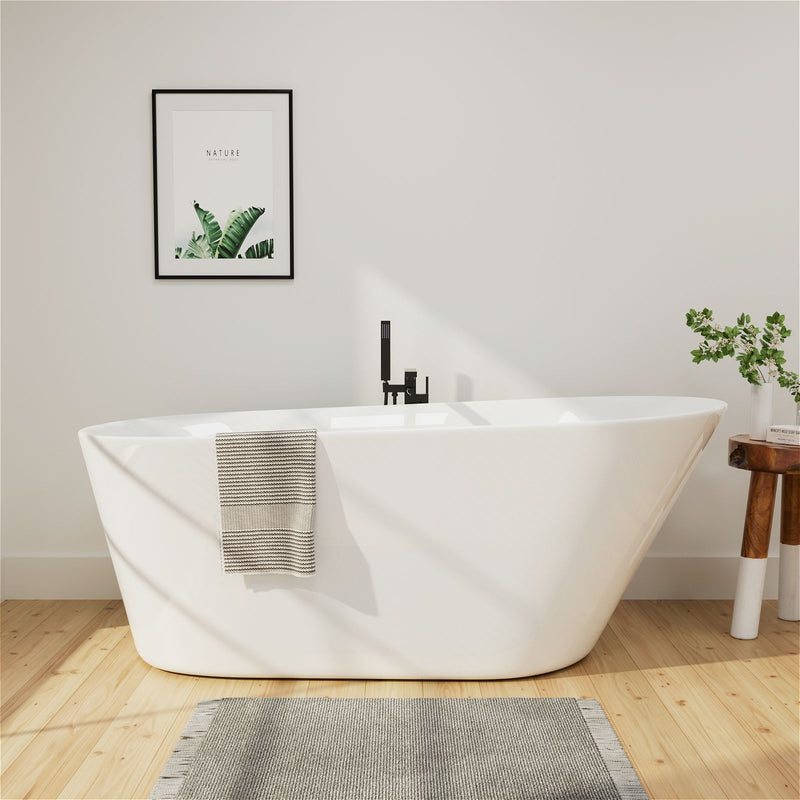When upgrading or installing a bathtub, people often overlook the proper drain size to ensure smooth drainage. A drain that is too large requires expensive plumbing modifications, while a drain that is too small can result in slow drainage. Proper drain size ensures that water flows unimpeded and complies with plumbing codes.
Whether you are a DIY enthusiast, contractor, or homeowner planning a bathroom renovation, it is important to know the size of your bathtub drain to avoid unnecessary installation headaches.
Why is Bathtub Drain Size Important?
Choosing the right bathtub drain is important for effective drainage, clog prevention, and compatibility with your plumbing system.
A properly sized drain ensures smooth water flow, minimizing pooling, odors, and unpleasant long-term water stains. Additionally, knowing the right bathtub drain size can save you from unnecessary worry.
A properly sized drain can solve any drainage issues, giving you a relaxing bathing experience.
Bathtub Drain Sizes
While bathtub drain sizes are standardized, you can still find drains that are slightly larger or smaller. Using the right size drain can prevent your tub from clogging and draining too slowly, and it also allows the drain to fit in with other plumbing behind and underneath the tub.
Standard Sizes for Tub Drains
Tub drains come in two main sizes:
- 1.5-inch: This is the standard drain size for most home tubs, including alcove tubs, freestanding tubs, and claw-foot tubs. These types of drains allow water to drain smoothly from your home.
- 2-inch: This drain size is common in larger, higher-volume tubs, such as Jacuzzis, soaking tubs, and whirlpool tubs. The increase in size allows for more efficient drainage, which can solve the water problems that larger tubs must deal with.
Modern Tub Drains
Modern tubs come with a standard 1.5-inch drain that works with a standard tub P-trap. In a few cases, such as custom tubs, tub drains may be as large as 2 inches. For example, some barrier-free walk-in tubs come with a 2-inch dual drain system that helps drain the tub quickly, since the user must wait until the water is drained before leaving.
Antique Tub Drains
Antique tub drains vary in size more than modern tub drains. Sizes range from 1⅜ inches (slightly smaller than a standard tub) to 2 inches (the standard size for a shower). The smaller size is more common in older clawfoot tubs, but is uncommon overall.
If your tub drain is 1⅜ inches, you may have trouble finding a suitable drain at your local hardware store. In this case, you can look for a specialty store, or upgrade the entire drain assembly to a standard size.
Shower-Bath Combo Drains
Like a standard tub, a shower enclosure has a 1.5-inch drain opening. This is different from a walk-in shower enclosure, which has a 2-inch drain opening as standard. Some homeowners choose to install a 2-inch drain opening for their shower enclosure, but this is rare because the tub already has a drain hole.
Overflow Drains
The most common tub overflow drains are 1.5 inches in diameter, the same size as a regular tub drain. These drains are sold in sets that include a tub drain and a connecting pipe. The purpose of an overflow drain is to remove standing water when the tub is at risk of overflowing, preventing water damage.
While the drain diameter remains 1.5 inches, the overflow drain length will vary. This depends on the size of the tub and the distance to the floor. Drain and overflow kits are available for all standard-sized tubs, and your contractor will cut the pipe to size. If you have a claw-foot tub, be sure to buy a kit specifically for claw-foot tubs, as the drain pipes vary in size.
To avoid installation issues when replacing your drain, be sure to measure the size of the existing pipe before purchasing a replacement.
How to Measure the Size of Your Tub Drain?
Here's how to determine the best drain size for your tub:
Measure the Drain: Take a tape measure and measure the size of the tub drain hole. Don't include the surrounding area.
Check the Drain Diameter: Look under the tub and see the existing tub drain size. If it's the equivalent of an inch and a half, then a standard drain will be fine. But if it's the equivalent of two inches, then you'll need a larger drain.
Consult your tub manual: Finally, some companies provide detailed information on drain sizes with the products they sell. If you're unsure, you can browse their website for more information.
If your tub has an overflow drain, you'll need to take a few different measurements before purchasing a kit. While most kits will fit most standard tubs, the pipes must be the right length so the contractor can cut them to size. If you hire a local plumber, they can help you out from start to finish. Here are the measurements you'll need to measure.
Drain Hole Diameter
The diameter of the drain hole will determine the size of the drain and surrounding pipes. Most tub drain holes fit a 1.5-inch drain pipe, which means the overflow and connecting pipe should also be 1.5 inches.
To determine the diameter, use a caliper or tape measure to measure the width of the hole. There are different types of stoppers for tub drains, so keep that in mind when choosing a kit.
Drain Shoe Length
The drain shoe length is the distance from the tub drain to the drain tee (the fitting that connects the overflow drain to the drain shoe). You'll need to look at the bottom of your existing tub to measure this, which can be difficult if the pipes aren't visible. Sometimes your bathroom may have an access panel with information on it. If not, use a tape measure to measure the length between the drain and the drain tee.
Overflow Depth
The overflow depth is the distance from the edge of the tub overflow hole to the bathroom floor. Use a tape measure to measure the vertical height. If the curve of your tub is difficult to measure, a laser level may be able to help you measure it.
Bathtub Depth
You may not need to know the depth of your bathtub when purchasing a drain kit, but it's a good idea to know ahead of time in case you do. Most bathtubs are between 14 and 20 inches deep, but some soaking tubs may be slightly deeper.
Choose the Right Drain Size
While bathtub drains are standardized, there are several factors that may affect the size of a specific drain, and you should consider the following before purchasing a bathtub drain:
Plumbing codes: Plumbing codes dictate the size requirements for the drain and surrounding pipes. If you're doing a DIY remodel, be sure to check local codes beforehand.
Your home's plumbing system: If you have 1.5-inch pipes and want to replace them with 2-inch drains, you may need to modify the rest of your plumbing system.
Bathtub Model: Drain sizes vary by model. Special drain features may require a larger drain. Freestanding bathtubs, clawfoot bathtubs, or custom-installed bathtubs may vary from standard dimensions in rare cases.
Bathtub Size: The size of your bathtub will determine the size of the overall drain and overflow kit. Larger soaking tubs or Jacuzzis that drain slowly are a problem and require a longer overflow pipe than the average alcove tub, which requires a 2-inch drain.
Age of the Tub: Antique or vintage tubs often have different drain sizes because they were built to outdated plumbing codes. Modern tubs usually have more standard drain sizes.
Material Choice: Plastic drains are less expensive, while brass drains are more durable.
Primary Overflow: Make sure the drain assembly works with the tub's overflow system.
How to Upgrade or Replace a Tub Drain?
To replace a tub drain, do the following:
Shut off the water supply: If necessary, shut off the water supply to prevent leaks.
Remove the old drain: Use a drain wrench or pliers to unscrew the old drain assembly.
Clean the drain: Remove any old putty or debris to aid installation.
Install the new drain: Apply plumber's putty around the new drain rib to secure it, then screw it into place.
Check for leaks: Observe the drain area while the tub is filling with water to check for any leaks.
Knowing the size of your bathtub drain can help you buy a drain that matches the size of your bathtub, ensuring smooth drainage and smoother installation. Whether you are buying a new bathtub or replacing an old drain, choosing the right size is crucial for its normal use.

